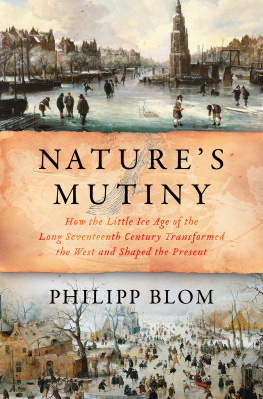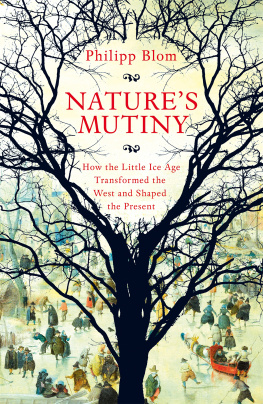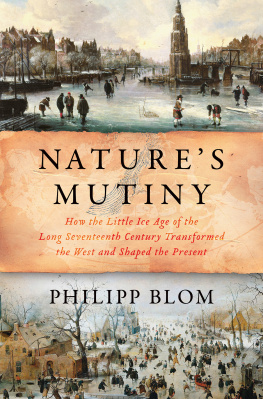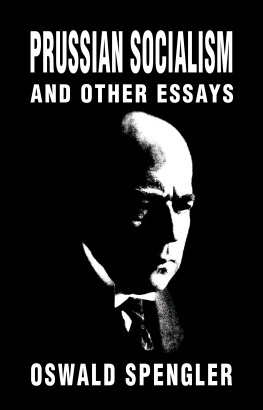FRACTURE

Copyright 2015 by Philipp Blom
Published by Basic Books
A Member of the Perseus Books Group
All rights reserved. Printed in the United States of America. No part of this book may be reproduced in any manner whatsoever without written permission except in the case of brief quotations embodied in critical articles and reviews. For information, address Basic Books, 250 West 57th Street, New York, NY 10107.
Books published by Basic Books are available at special discounts for bulk purchases in the United States by corporations, institutions, and other organizations. For more information, please contact the Special Markets Department at the Perseus Books Group, 2300 Chestnut Street, Suite 200, Philadelphia, PA 19103, or call (800) 810-4145, ext. 5000, or e-mail
Design and composition by Eclipse Publishing Services
Photo and excerpt credits appear on .
A CIP catalog record for this book is available from the Library of Congress.
E-book ISBN: 978-0-465-04071-1
10 9 8 7 6 5 4 3 2 1
For Manfred, Peter, and Tanja and in memory of Jon, poet, teacher, and friend

God is dead. A world has collapsed. I am dynamite. World history has broken into two halves. There is a time before me. And a time after me. Religion, science, moralityphenomena originating in the fear of primitive peoples. An era collapses. A thousand-year culture collapses.... The world reveals itself to be a blind battle of forces unbound.
Man lost his celestial face, became matter, conglomerate, animal, an insane product of thoughts twitching abruptly and insufficiently.... And another element collided destructively and menacingly with the desperate search for a new order in the ruins of the past world: mass culture in the modern metropolis. Complex the thoughts and sensations assailing the brain, symphonic the feelings. Machines were created, and took the place of individuals.... A world of abstract demons swallowed individual expression, swallowed individual faces into towering masks, engulfed private expression, robbed individual things of their names, destroyed the ego and agitated oceans of collapsed feelings.
Hugo Ball, Kandinksy, 1917
Contents
ON AUGUST 10, 1920, AT NINE-THIRTY IN THE MORNING, THIRTY-SEVEN-year-old singer Mamie Smith and her musicians arrived at a recording studio close to New Yorks Times Square. Crowded around the large horn of the recording machine, they began improvising their way into Crazy Blues, a song written for the occasion. Again and again they played, riffing and refining as they went. Perry Bradford, the pianist, remembered: As we hit the introduction and Mamie started singing it gave me a lifetime thrill to hear Johnny Dunns cornet moaning those dreaming blues and Dope Andrews making some down-home slides on his trombone, while Ernest Elliott was echoing some clarinet jive along with Leroy Parker sawing his fiddle in the groove. Man, it was too much for me.
The blues dealt with disappointed lovehow could it be otherwise? Smith sang with raw grief in her powerful alto voice as clarinet, violin, and trombone sighed and groaned alongside her, the musicians fortified by a steady supply of bootleg gin and blackberry juice. After thirteen takes and eight hours of work the musicians declared themselves satisfied with the result. They were tired and happy, in something of a collective trance. They saw out the day over plates of black-eyed peas and rice at Mamies apartment.
Smith had left the grim Cincinnati neighborhood where she grew up and made a reputation for herself in vaudeville theater in Harlem before beginning to appear in bars and speakeasies. It was a life at the edge, but it had its rewards. Her expressively dark and flexible voice soon brought her a local following, and eventually even the great Victor label became interested in making a record with her. They eventually dropped the idea, however, ostensibly on artistic grounds, but more probably out of fear. Smith was black, and southern customers in particular had warned record firms that they would boycott their products if they began to record and credit black artists on their discs. Finally a smaller firm, the OKeh Phonograph Company, had decided to defy the threats and give Mamie a chance. She had recorded her first blues song, That Thing Called Love, on Valentines Day 1920 with an all-white band of musicians, a compromise solution. No other African American had ever recorded a blues song before.
That Thing Called Love had done well for the company, and for the second record Smith was allowed to play with her regular band. When she had heard of the decision, she broke into a spontaneous dance of joy. Now, after a long days recording, the second record, Crazy Blues, was ready for pressing and distribution. It would sell seventy-five thousand copies in Harlem alone in just one month. Throughout the United States, sales soon topped one milliona historic achievement, and not just for a black artist. Only star tenor Enrico Caruso and Al Jolsons hit song Swanee sold more that year.
What made Mamie Smiths recording success so phenomenal was that both white and black households were buying Crazy Blues. Something new had happened. Classical singers such as Caruso and professional crooners such as Jolson had begun to carry a more popular repertoire into peoples lives, but always in a form as shiny and carefully arranged as Jolsons brilliantined hair. By contrast, Smiths singing conveyed unvarnished emotion. A whole culture found its voice in hers. She combined the bellow of a street hawker and the vocal punch of an angry washerwoman with the sorrow of centuries of humiliation and a young womans sheer lust for life. It was not the first time popular singers had sung with such raw sassiness, of course, but it was the first time such a performance had been recorded. The voice of the down-and-dirty people came into the polite living rooms of the middle and upper classes, and young listeners in particular decided that it spoke for them, too.
As Mamie Smith was riding a wave of success as Queen of the Blues, other black artists broadened the appeal of jazz in the United States and beyond. Jazz was much, much more than danceable tunes. It was the child of slavery and speakeasies, the inspiration for indecency and irresponsibility, acoustic subversion, the musical infiltration of lives lived at the margins into the center of society. In America, young black musicians such as Louis Armstrong, Jelly Roll Morton, Sidney Bechet, Bessie Smith, and Duke Ellington were often restricted to segregated or illegal clubs and bars. In Europe, which was still reeling from the nightmare of the First World War, they toured the great cities and were welcomed as heralds of a new age. Jazz somehow embodied everything that had changed, and more: it embodied the fact that nothing was the same now as it had been in 1914.
Jazz became the soundtrack of an age, the incendiary charge flung into society, igniting tensions, stoking sensuality, and sapping the old order. Even the Nazis would pay tribute to the power of its message by fighting a culture war against degenerate nigger jazz, wary of its immense pull and eloquence yet unable to replace it with anything but cheerily sterilized swing music, military marches, and Viennese waltzes corrupted into vehicles of National Socialist feeling. But they never felt safe. Syncopation, it seemed, was lurking in every corner.
A paradox lies at the heart of this image of an all-new world suddenly risen from the war. As I have argued in The Vertigo Years: Change and Culture in the West 190014








